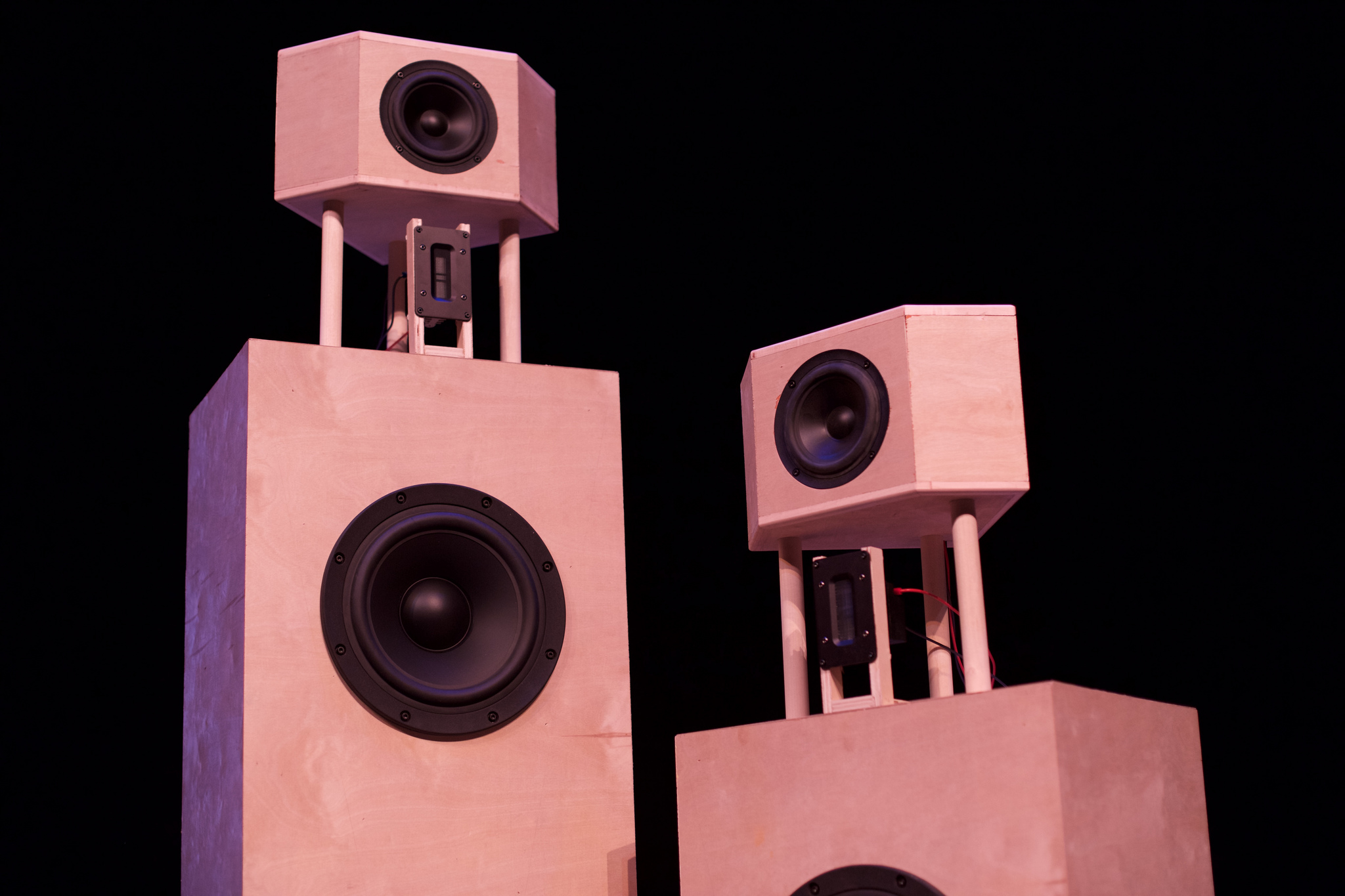Archive
Scary Stereo

Scary Stereo was born from my wish for big scary tower speakers. I wanted nice home theater speakers for my living room as big as I could possibly get them. When thinking of how to use all the surface area, I decided to paint them with chalkboard paint. As these speakers are for listening forward I prioritized low-frequency extension with the large size of the cabinet as well as 15″ subwoofer drivers. My subwoofers pair with my mid and tweeters to make a transparent sound stage reaching above 20k.
Goals
- Bass Extension
- Transparency
- Pleasing to the ears
Drivers
- Dayton Audio RSS390HO-4 15″ subwoofer
- SB Acous)cs SB17NBAC35-4 6″ midwoofer
- SB Acous)cs SB29RDAC-C000-4 tweeter
Specifications
- F3 below 20 Hz
- +/- 2dB mid/highs
Measurements

Full Tuned Speaker Frequency Response

Integrated Frequency Response

Subwoofer (green) and port (blue) Frequency Response


Sandcastle 7.2
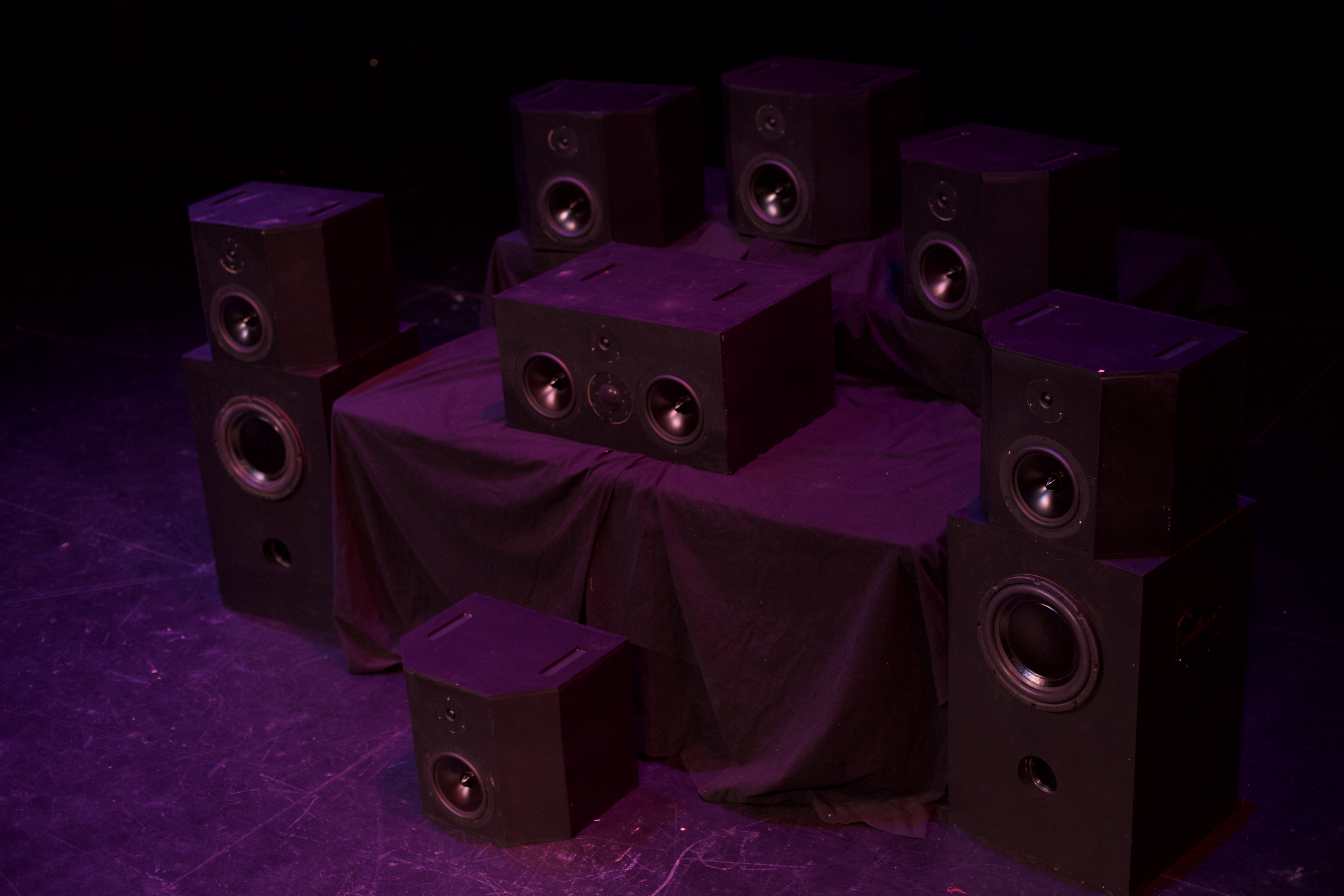
Designed by: Eric Bartos
Goals
- 7.2 surround sound system for enjoyment and the occasional mix
- +/- 4dB response
- active crossover
Key Features
- F3 of 38Hz on surround speakers (before crossover between subwoofer)
- F3 of 34Hz on center speaker (before crossover between subwoofer)
- F3 of 24Hz on subwoofers
- +/- 4dB from 50Hz to 21kHz on surround speakers
- +/- 4dB from 47Hz to 21kHz on center speaker
- +/- 2dB from 25Hz to 200Hz on subwoofer
- center speaker has active/passive crossover system
- 1/2″ birch ply and 1/2″ MDF construction for center speaker and surround speakers
- 1/2″ birch ply and 3/4″ MDF construction for subwoofers
- BSS Blu-100 & BSS Blu-BoB for DSP
Drivers
- Woofer: Dayton Audio RS225-8
- Tweeter: Seas Prestige 19TFF1
- Midrange (Center speaker only): Dayton Audio RS52AN-8
- Subwoofer: Eminence LAB12-C
Frequency Response
Surround speakers
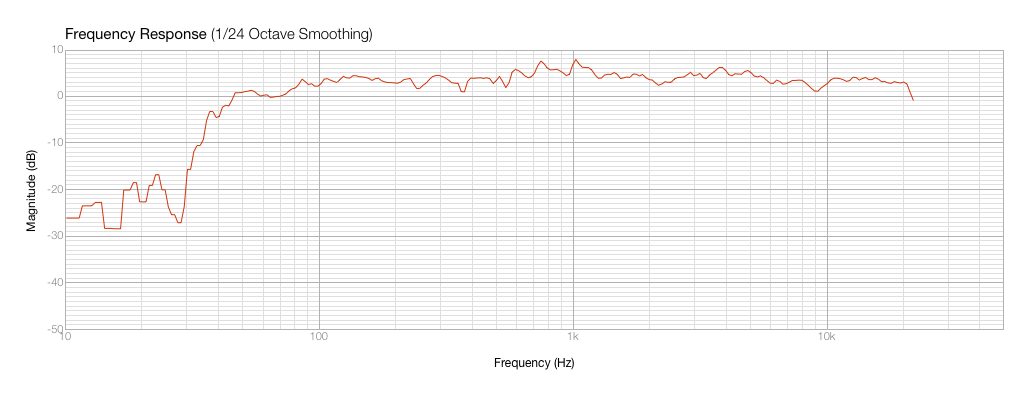
Surround Integrated Response

Center Speaker
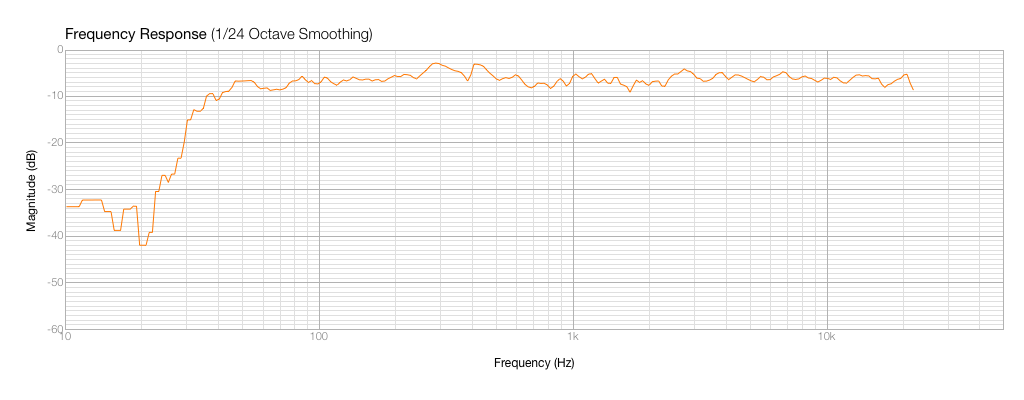
Center Integrated Response
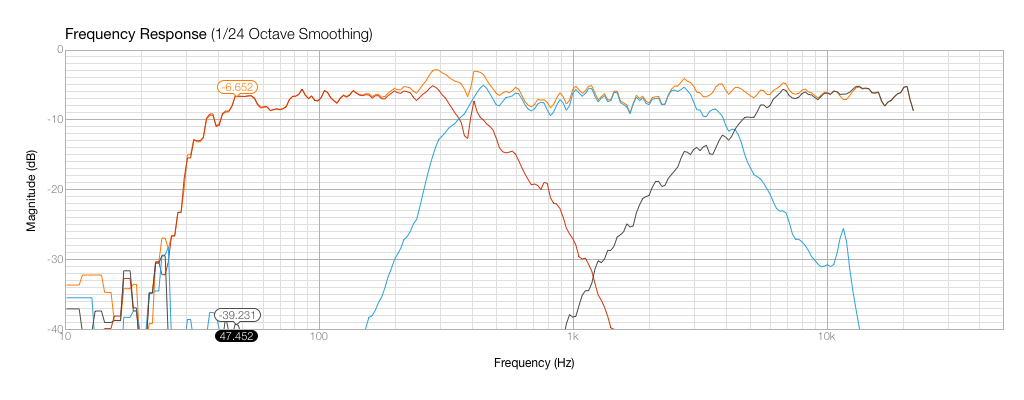
Subwoofer

Ignis Series 1
Designed, Built, and Tuned by Jonathan Moths
Design Goals:
- Small size for desktop use
- Low cost ($400-500)
- Primary use is listening for pleasure
- Maximize bass extension despite small size
Features:
- 1″ diameter side port to enhance bass extension
- Portability and small size (9 1/2″ x 9 1/4″ x 1’2″)
- +/- 2 dB from 70 Hz to 20 KHz
- F3 of 60 Hz
- Metal Dome Tweeter
Drivers:
- SB Acoustics SB26ADC-C000-4 Metal Dome Tweeter
- SB Acoustics SBMFC35-4 6 inch Poly Cone Woofer
Documentation:
Two Towers by José Cordero-Medina
Left-Right speakers capable of full frequency range and meeting Dolby standards for cinema playback. Designed to provide a cheaper replacement to the current sound system in Walker 134. Center channel also designed, not yet built.
Overall Design Goal:
Provide Dolby standards for cinema playback to Walker 134. System capable of outputting 85dB SPL at audience distance with a 20dB headroom and an additional 10dB for the Low Frequency Effects unit.
Cabinet Construction:
5-sided box removes parallel surfaces reducing resonance in particular frequencies while also providing directional sound for maximum even coverage. 3/4 in layer of 13ply plywood outer layer and 1/2 in inner layer of MDF combine to provide rigidity to the cabinet as well as support for its size of 5’5″.
Drivers:
Each of the drivers were first and foremost chosen for its sensitivity and secondly for its compatibility with each other. Unfortunately, not all have perfectly flat response, reducing the overall frequency response balance, thus not making them suitable as professional mixing speakers. They do offer great sounding playback worthy of cinema speakers.
Cross-Over:
Very simple design with some additional parts for driver attenuation. The tweeter has a 1st order Buttersworth at 1.8kHz crossing over to the midrange with a 3rd order Buttersworth at 1kHz. The tweeter has a baffle step correction above 4kHz of -5dB, the midrange has a -3dB pad and the entire cross-over has a -6dB pad. The midrange rolls off naturally at the bottom end. The woofers have an interesting testing error cross-over that ended up working. As testing and tuning went by, I was changing the crossover from a 3rd order Buttersworth at 150Hz to 100Hz. I changes the capacitors, but not the inductors. Not sure what kind of cross-over it really is now, but it did what I needed it to, so I left it. It also has a notch filter at 200Hz to get rid of an overlap with the midrange driver.
<a rel=”license” href=”http://creativecommons.org/licenses/by-nd/3.0/us/”><img alt=”Creative Commons License” style=”border-width:0″ src=”http://i.creativecommons.org/l/by-nd/3.0/us/88×31.png” /></a><br /><span xmlns:dc=”http://purl.org/dc/elements/1.1/” href=”http://purl.org/dc/dcmitype/Sound” property=”dc:title” rel=”dc:type”>Michigan Tech Transducer Theory Dolby Speakers</span> by <span xmlns:cc=”http://creativecommons.org/ns#” property=”cc:attributionName”>Jose Miguel Cordero Medina</span> is licensed under a <a rel=”license” href=”http://creativecommons.org/licenses/by-nd/3.0/us/”>Creative Commons Attribution-No Derivative Works 3.0 United States License</a>
System Tests:
BB 2-Way Loudspeakers
A well balanced speaker with a low x-over by Ben Boeshans
The primary design goal of the speaker is all-purpose music speaker for everyday listening. The speakers require good low-end extension, good clarity, and low fatigue. The crisp highs were obtained through crossover points calculated to be 900 Hz for the woofer and 1.2 kHz for the tweeter. The goal was met, as exhibited by the several peer reviews some of which commented, “extremely clear,” very accurate,” and “sounded really clean.” I really like the sound of plucked guitar played on the speakers. If one closes their eyes they can believe the guitar is being played in the same room. Part of that effect is also attributed to the reverberation in the cabinets. After experimenting with a few different types and amounts of damping materials a balance was found between the openness of the speaker and eliminating resonances.
Design Objectives
- All-purpose Music Speaker
- Tight Low-End Response
- 97dB SPL Max output
- f3 = 50Hz
Key Features
- Soft-dome tweeter for mellow yet clear highs.
- Low crossover point for fast transient response.
- 2” Port for bass extension.
- 8” Woofer for solid, defined low-end.
- MDF/Plywood layered cabinet for reduced resonance.
- Smooth frequency response 60Hz to 20 kHz.
- Accurate off-axis response.
Technical Reports
- BB_Design_Statement
- BB_Final_Report
- Testing Report
- Drafting
- X-over Schematic
Tests
